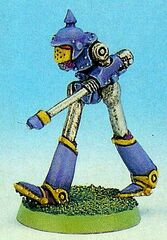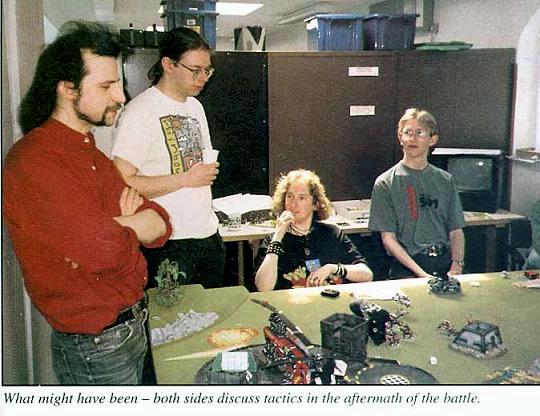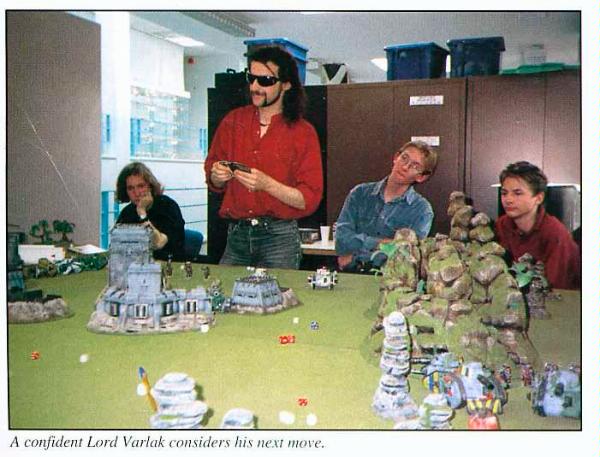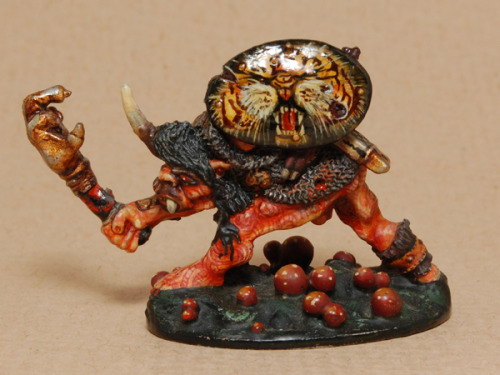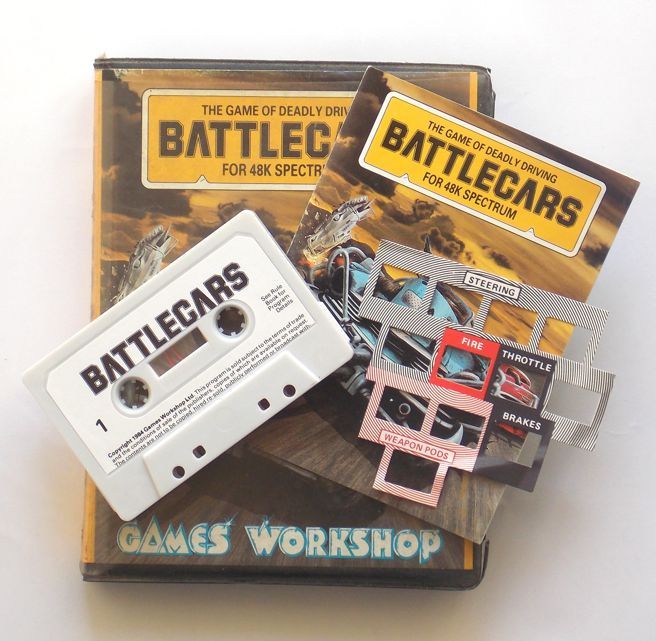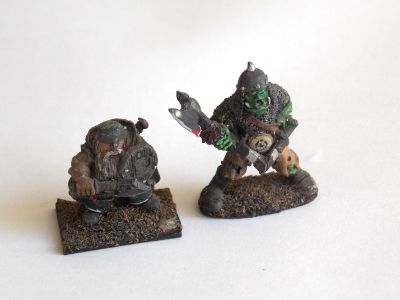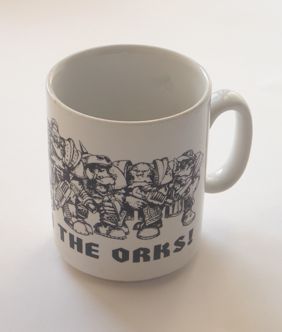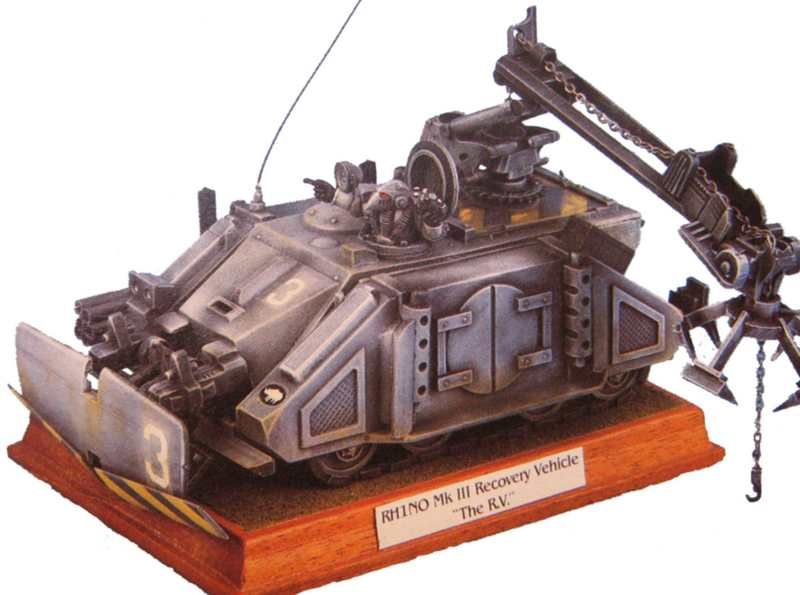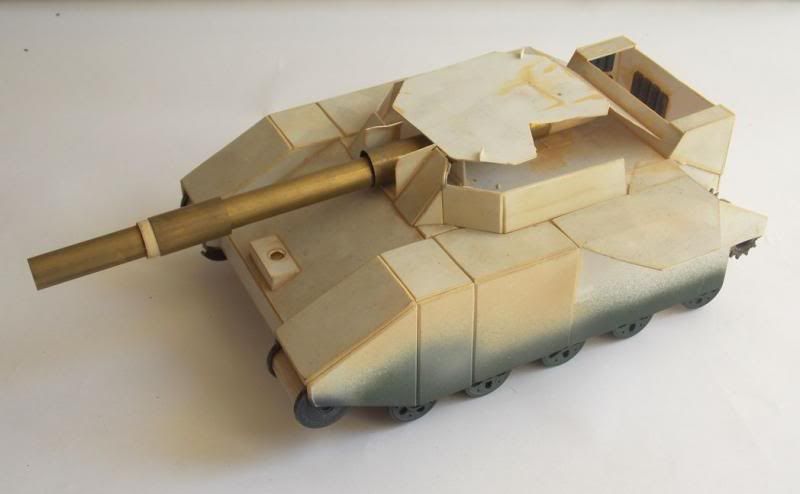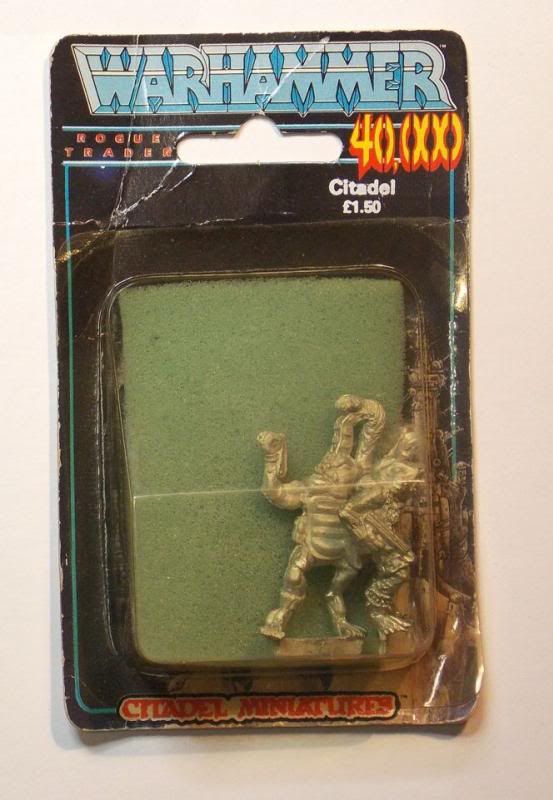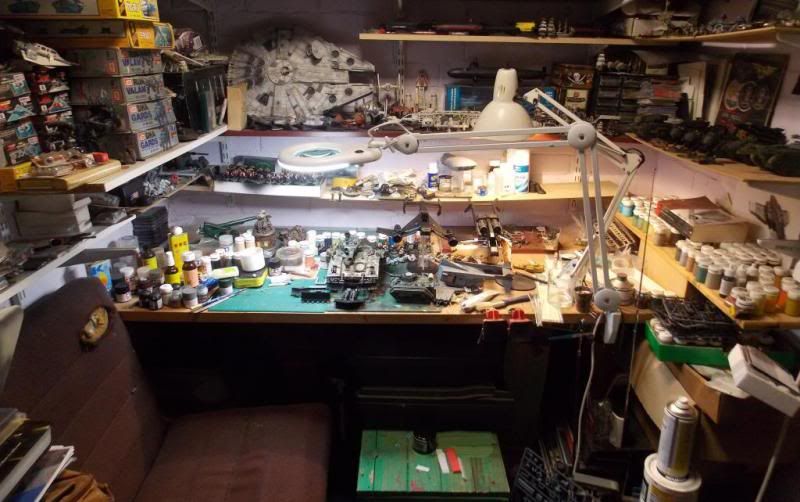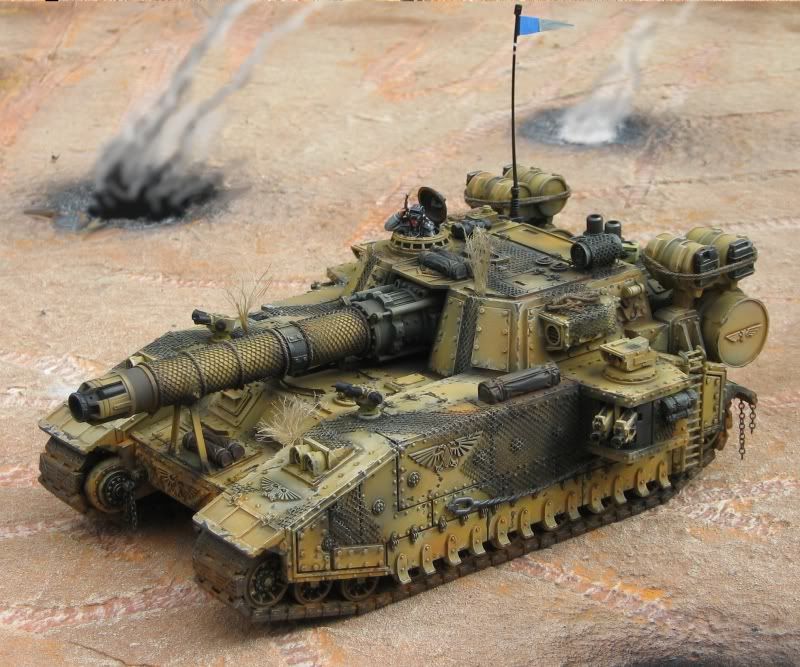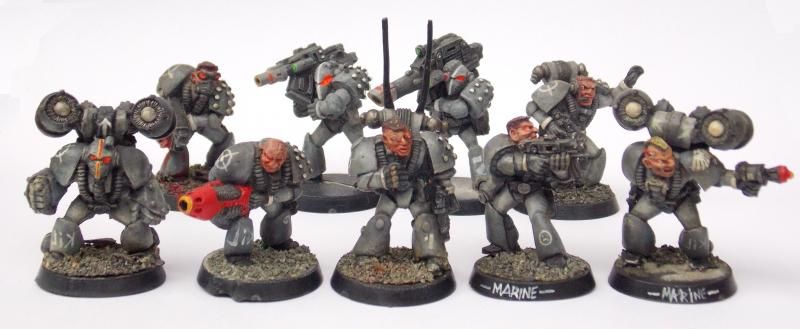Introduction
Last night, I packed up many of my painted miniatures into their soft, foam travel case, got hold of my weighty rulebooks, dice and scenery and headed over to Dan's house. Our intention was to thrash out the easiest way in which to use Warhammer Third Edition to organise the Chaos Warbands Mega Battle to celebrate the 25th Anniversary of Slaves to Darkness, being fought at the Foundry on Saturday. In the process, we fought a battle for the sole reason of trying to identify any problem areas that we may have when trying to run this battle with up to, and maybe exceeding, thirty other players and their warbands.
It quickly became apparent that such a game, using such a rule set, will have to depend on a great deal of autonomy on the behalf of the players. They are going to have to be responsible for completing shooting, magic and close combats pretty much independently with the owner of whatever particular models they are fighting, blasting or shooting. We will be there to act as guides and to adjudicate in the case of argument, but we will be little more than overlords viewing much of the action.
As you may know, there will be a largish table on which the game will be played. On table length will be reserved for Khorne and his Nurgle allies to enter the battle. The other, yes you guessed it, will be for the exclusive use of Slannesh and his/her ally, the forces of Tzeentch. The remaining two table edges will be free for all, so if you want to enter the conflict from these spaces, that is your choice.
Khorne and Nurgle will go first, and complete the first turn. This turn will follow the standard Third Edition Sequence as explained in the Warhammer Armies Reference section - though this was later republished in the paperback edition of WHFB3! Each phase is allotted a number, so if you are unfamiliar with the rules then please don't panic, as in this article I will go through how the game runs and hope to give you a little idea about how things will work.
Turn Sequence
A:Turn Start - Wizards regain power, Spell effects determined, fire and its affects and various psychology tests made. This will be overseen by Dan and myself.
B: Movement - the active side will move their units during this period, including any flying creatures, though the actual time will be limited to ensure that the game moves quickly. How long the movement phase will depend on the speed of the game and will be adjusted accordingly. Charges must also be stated here and the models moved. Any actions by the units receiving the charge, including fear tests will be carried out here.
C: Shooting phase. Again, this will be timed if appropriate, and the Khorne and Nurgle players will get the chance to nominate units who will be shooting and who their targets are. Aerial shooting will be included. Players will be invited to sort out their own combats in an agreeable fashion.
D: Combat phase: Again, this will be left to the players to sort out, though Dan and I will be available to adjudicate. This phase will be timed and Dan and I will help organise the combat results, push backs and any additional modifiers to be included.
G: Reserve phase - units not within 4" of friendly or enemy troops my move a second time. This will allow players to get into or out of the action quickly.
H: Magic phase- Players with magic users will need to cast their spells, deduct magic points and calculate the effects of their magic.
I: Rallying phase- routing troops can be halted by the effective use of a leadership, or other associated test.
The turn sequence would then be over, and control of the game will move to the Slannesh and Tzeentch players, who will follow the same series of phases.
There are an enormity of different rules at play, and to be honest, no one is going to have a good grasp of them all. Dan and I feel that common sense needs to prevail at all times when confusion arises. After all, this experience is suppose to be the exact opposite to a tournament game. This is also true of any ideas you may have that do not appear in the rule set. We are more than willing to hear any suggestions and devising rules on the spot to mutably agreeable fashion to resolve almost any conceivable situation you can think of.
Playtest
Okay, I am about to go through with you all the playtest battle that Dan and I fought to try and get to grips with the game. We created four warbands, one for each of the four powers, and spread them across the two sides (Khorne + Nurgle vs Slannesh + Tzeentch) in much the same fashion as we expect players to do. Feel free to set your models up along whichever piece of table is free. Considering that you will have three table edges to choose from, you will have plenty of options about where to start.
The warbands were not costed. We just picked miniatures randomly, though we ensure that each warband had at least one big creature/monster. Points are irrelevant here.
What follows is a series of photographs in which I shall try and explain what is going on and what we did. Hopefully, this may provoke a ray of light or two from those of you at home who are, perhaps anxiously, flicking through their Third Edition rulebook with trepidation!
Here we have the set up. Four warbands spread out across the four table corners. Yes, we use a very small board as we have limited space. In fact, it is the lack of space we have to play that caused us to choose to play Slaves to Darkness in the first place. Bottom left, we have the forces of Slannesh, lead by a champion, four orcs, six beastmen and a giant spider. Bottom right we have Tzeentch, the allies, with a sorcerer, six thugs, three beastmen and a troll. Top right resides Khorne, with a champion, minotaur, three beastmen, a chaos hound (Mange returns!) and six thugs. Finally, top left we have the forces of Nurgle. A sorcerer, six skeletons, four beastmen, two thugs and an ogre.
None of the champions were armed with chaos weapons and all wizards had fireball as standard.
Khorne and Nurgle had the first turn. Models were moved as their movement statistics, be careful though, depending on weapons and armour, there may well be modifiers to movement. Many of the beastmen were armed with light armour and shields and ended up moving only 3 and a half inches rather than the usual four. We don't consider a body of troops to be a unit, and need to follow the unit rules for manouvering, unless they have 10 models or more. We made this decision due to the nature of the warbands themselves (just a group of a few warriors) rather than a drilled army. Treating small bodies of figures as individuals also speeds up play as there is no need to worry about complex manouvering. Additionally, we decided that there need be no restriction how close one model can move to another and that units may change their formation to move between scenery. Modifiers for crossing obstacles will remain in place however
Here we have a shot of the Nurgle Warband after their first movement stage. Notice that this warband has a small number of skeletons, and it is certainly a possibility that we will see undead upon the field on Saturday. Dan and I discussed whether or not hardened Chaos Champions who prowl the chaos wastes would be scared of mobile bones, and for a while decided to remove fear as an option when dealing with champions. Later, we decided that this was un-necessary, as the CL level of the more elite champions made it practically impossible to fail a fear test anyway. So fear via undead stays in. Also worth mentioning here is line of sight. The Nurgle sorcerer at the rear of the warband is unable to use much of his magic due to the fact that his vision is obscured by his own men. If you intend to bring a magical character, think carefully about his positioning. Just after this shot was taken, Dan charged his ogre into the Slanneshi orcs, but duff dice rolling resulted in nothing of note.
Dan checks the rules once more. He loves the statistical nature of wargames rules while I am far more of s free and easy roleplayer. Basically, I make it up as I go along, Dan likes to use the rules so its fair. Bottom of the picture you can make out the Khorne minotaur, which Dan charged into the Tzeentch sorcerer. Being a champion, he stood his ground and unleashed a fireball spell, which collided with the brute beast and wounded it once.
Rules checked, Dan moved his Khornate thugs up against the face, intending to use the cover as a defensive barrier against a possible attack from the Tzeentch beastmen, or even the troll. This is an example where modifiers come into play, and we are going to ask players to calculate these for themselves, though we will be there to adjudicate if there is a problem. With up to thirty players fighting at once, keeping tracks on everything will be impossible. Striking to hit suffers a -1 modifier if a model or unit is behind cover such as this, though when the beastmen charged the thugs, this was cancelled out for the first turn by the +1 modifier of the charge bonus.
Once the turn was over for Khorne and Nurgle, Slannesh and Tzeentch were free to move. The the Slannesh champion, with his attendant beastmen advanced to the hedgerow, ready to advance in their next turn while the spider got ready to leap over the bushes and strike the advancing Nurgle warriors. One thing to remember, if a body of troops (whether they are considered a unit or not) is caught halfway across an obstacle, then they need to make a panic test to avoid breaking and routing. So, depending on the scenery available on the day, you may well want to time your charges well.
Once movement was complete for the Slannesh and Tzeentch warbands, I got stuck in to some combats. Poor dice rolling from both sides resulted in very little happening on this side of the field, as the minotaur and the sorcerer traded blows. With no shooting weapons among the warbands, we ignored this phase entirely. In the picture you can see some unengaged models, these get a second chance at moving during the reserves phases later on in the turn.
Having completed my first full turn, the attention turned back to Dan's Khorne and Nurgle worshippers. The combats continued to be dogged by poor dice rolling from the the both of us, and little happened during the close combat phases. Dan advanced his troops forwards once more during the reserve phase. It was magic that really hit the mark this time, with the Nurgle sorcerer casting fireball at the Slanneshi champion. Now, let me talk about magic. Its all about the number of magic points in Third Edition. The Nurgle sorcerer had 20 magic points to begin the game with, and most spells are automatically cast until you reach below 12 magic points, when you have to roll against your remaining points (but not below your intelligence). So, his fireball spell was automatically cast, and hit automatically too with D3 hits (he rolled 5, so produced 3 hits) with no armour save! Subsequently, the Champion of Slannesh took 3 wounds and promptly died! Now this got us talking about what players are to do if their champion perishes but they have models left on the field, well, they simply need to nominate a new, lesser champion to take over.
My second turn, began with combat as there was little movement apart from the beastmen crossing the hedge. My troll managed to pass his stupidity test at the beginning of the turn, and I promptly charged him into the Khorne beastmen. Now being charged by such a beast is now laughing matter and Dan had to take a fear test to determine if those models would remain where they were.
As you can see, they failed, and promptly ran from the field pursued by the gigantic green troll. Here is a good point to explain the free hack, as we understand it. When a unit breaks, the models are turned to show that they are unformed and the attacker gets a free attack with automatic hits. Once these are resolved, the models are moved at double their movement rate and the attacker has the option to pursue if they can (note, minotaurs suffer from bloodgreed and often remain munching on corpses). If the attacker has enough movement to reach the routing models, they get another free hake with automatic hits. Brutal stuff indeed! Its here, with fleeing troops that the real damage can be done!
Here we have an overview of the battle at the end of Khorne/Nurgle's second full turn. The beastmen and thugs are still fighting over the fence on the left hand side, the Tzeentch Sorcerer struggles with the minotaur, while the Khorne champion has charged the thugs crossing the bushes (they passed their panic test so remained in place). Mange, the famous Chaos Hound, hand charged into the Slanneshi beastmen but had yet to make any real impact or suffer a wound in return. The spider had charged over the bushes and into the thugs and skeletons of Nurgle, while the ogre had managed to kill one of the the orcs.
As the combats ground on, the minotaur fell to the hook of the minotaur, freeing up the champion to turn and engage with the Khorne leader to his left flank.
My orcs were not so lucky, with the ogre's power (doubled with that of the Nurgle sorcerer) cutting through them in swathes. Soon, they were wiped out.
No wanting to reduce the pressure on my forces, Dan charged the Ogre straight into the rear of the spider at his next opportunity. The great arachnid was now pretty much surrounded and struck on every side. Within a few combat rounds it was dead. With the loss of the champion, the orcs and now the spider, only the few beastmen remained of the Slannesh warband.
The surviving Slanneshi beastmen were under attack from the chaos hound, and were steadily losing ground against the canine killer. The Tzeentch sorcerer helped reduce the pressure by fighting the Khorne champion.
On the other side of the board, my troll had passed its stupidity test and destroyed the Khorne thugs with a devastating rear charge. Three models fell under the force of the trolls sickening vomit attack and the remaining thugs (having lost more than 25% of their strength in a single turn) ran from the field with the troll jabbering after them. This left just the Khorne champion fighting alone for the Blood God.
The author of this blog reflects for a moment over the rules. Note the enormous casualty pile! I wonder how big the pile will be on Saturday afternoon?
With Khorne and Slannesh practically destroyed, the focus of the battle shifted to Tzeentch vs Nurgle. Two hated foes clobbering each other with magic and steel. The ogre charged once again, into the Slanneshi beastmen, but again they held firm. The Tzeentch thugs closed around the Khorne champion and the forces of Nurgle advanced in force against the remaining two beastmen and the troll. It seemed certain that Dan would crush me where I stood.
Despite losing three thugs to his blade, the Khorne champion finally fell beneath the combined assault. They barely had enough time to reform and receive the charge of the four Nurgle beastmen.
With incredible, and seemingly exhaustive, good luck, the Slanneshi beastmen finally killed poor old Mange, and we lamented his passing. The ogre too managed to duff his attacks so, despite loosing another model in the brawl, the beastmen were still in the game. To the north, the troll begins to take apart the easy to kill skeletons, but would this destruction be over in time for the troll to gather his wits about him and deal with the remaining enemy fighters?
Then the game changed. The Tzeentch thugs were engaged with the Nurgle beastmen, when the Tzeentch sorcerer charged the beastmen in the rear. This triggered a panic test which the beastmen failed. Being so close to other Nurgle models, each group has to test for a panic test as they were so near routing troops. In sequence, they all failed and ran, including the ogre. Free hack came into force and in the resulting pursuit, the Nurgle forces were pretty much wiped out to a man.
With only the undead uneffected by the rout, the remaining Nurgle models were cut down by the vengeful Tzeentch worshippers.
The game ended with the surviving Slannesh beastmen finishing off the Nurgle sorcerer. And the game was over, with the Changer of the Ways loosing only a single beastman in the process! I am sure that was all part of his wider cosmic plan I am sure!
Well, are you intending on testing your warband against all comers on Saturday? Do you have any questions or ideas that you feel Dan and I should think about and discuss in the two and a half hour journey to Nottingham?
If you do, of you have any other comment to make about the Realm of Chaos Slaves to Darkness game being held at the Foundry on Saturday, please comment below!
Orlygg


























